Outside Kuala Lumpur, Penang and Melaka are regarded as West Malaysia’s culinary capitals. By reading around, however, I learned about a third contender to the title, which perhaps is the least popular among the three. Then again, it was where Malaysia’s national drink, white coffee, was born. We went to the city called Ipoh in the state of Perak. Read more…
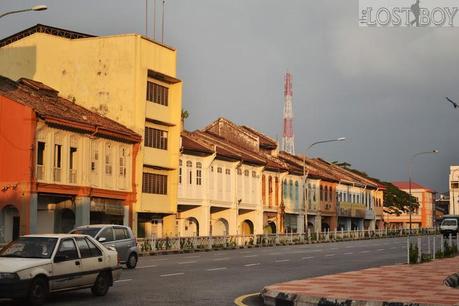
When I found out that I was doing another Malaysian adventure, I immediately read about destinations I haven’t visited. I’ve already been to Penang and Melaka, and flights to Langkawi were too expensive at the time. Thus, I silently blog-hopped more and even downloaded a popular guide book about Malaysia.
It was then my eyes set into Ipoh. Everything I know about this city in Perak is that it is the origin of white coffee, and with that in mind, I actually thought Ipoh is one strange, boring town full of coffee plantations and factories—this being the reason why it isn’t a popular destination with backpackers and travelers, the Filipino ones at least.
But thanks to the blog called Motormouth from Ipoh, I read there was so much to the city than white coffee. I based our day trip on his food list, and I was determined to taste the must-eats and also see the heritage buildings.
Ipoh cuisine is mainly Chinese, as settlers of Cantonese and Hakka descent migrated during the tin rush in the late 19th century. Visitors to Ipoh would notice the magnitude of Chinese influence in the food and architecture, and as a matter of fact, I believe it’s the most Chinese city in Malaysia that I’ve been to so far, even beating Georgetown, Penang in my book.
Our day started early at a random hotel in Jalan Petaling, Kuala Lumpur. I specifically chose Chinatown, so we could save money on train fare or a taxi to Pudu Sentral, the terminal for northbound buses. I was somewhat dismayed that the first bus was set to leave at 7:40 AM, for I was expecting a 7:00 AM bus. Malaysians do really start their day late.
Long-distance buses in Malaysia are definitely more comfortable than the ones back home, and what we rode to Ipoh wasn’t an exception. Taking the bus, aside from being more comfortable, is cheaper than taking the electric train too. Well, the fastest train to Ipoh only takes an hour and 50 minutes—that’s an hour less—but the price is double.
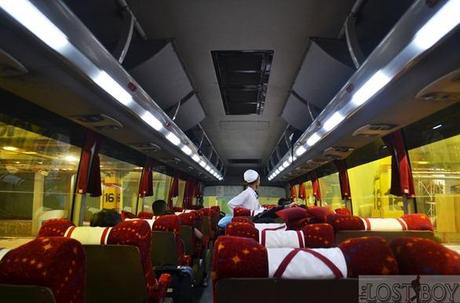
The trip to Ipoh took about three hours, and so, it was our chance to sleep. At around 10:30 AM, we were already at the Medan Gopeng Bus Station. It was a transit point to Medan Kidd Bus Station, where the city buses are. In Malaysia, nobody is allowed to get hungry, so I wanted to have lunch already! With that, I asked for a bus going to our first stop.
Foh San is the most popular dim sum restaurant in Ipoh, but the bus took us to another restaurant called Foo San. The heat was killing us, so after changing money, we gave up the hunt for a bus and took a taxi. It was a fairly short ride to where Foh San is, but I was still surprised to be charged only 6 MYR, the cheapest we’ve paid for a cab in Malaysia, ever.
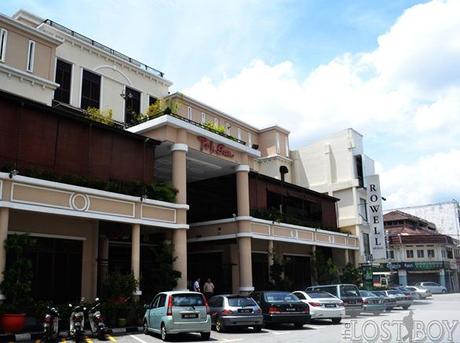
However, Foh San was closed. It was a real downer, but we saw just across it another popular dim sum restaurant, Ming Court Hong Kong Tim Sum. As we were at the door, a Chinese auntie immediately whisked us to our seats.
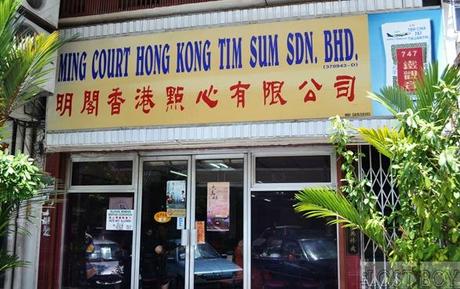
See, I’ve never been to a true dim sum shop restaurant before, so I was overwhelmed how the aunties were peddling us trays and trays of steamed or fried dim sum. We were so hungry though that we said yes to everything—from siau mai to char siew bau to congee.

Each tray of dim sum wasn’t that expensive, and I could say that I liked everything we had because of the quality and the authenticity. We downed each bite with soulful jasmine tea, but at that point, I was deeply craving for a glass of ice-cold soft drink.
Based on the map the Ming Court auntie gave us, we hunted for Kedai Kopi Sin Yoon Loong. It was a long walk under the intense heat, yet we had to be patient. We were, after all, walking for the best white coffee in town. When we arrived, we were so lucky to get seats, as I’ve read that the kopitiam is so famous that the line to get seated could take time.
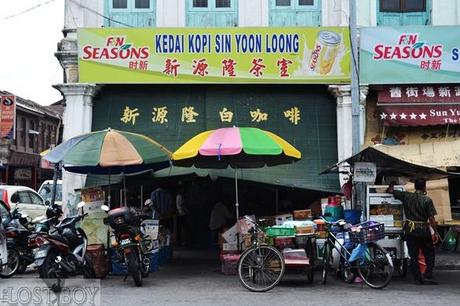
We had one hot and one cold white coffee plus two slices of kaya toast. The cold coffee was delightfully mild and sweet, while the hot coffee had a beautiful amount of acidity and boldness. By the way, I got bewildered that our bill came to only a little over 5 MYR total. You can’t even buy the smallest cup of coffee from one of those popular cafes with that!
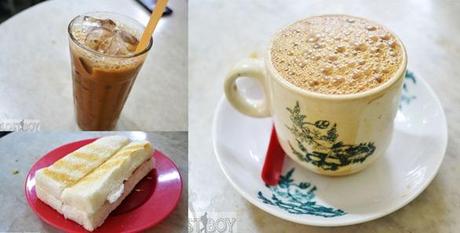
Just across Sin Yoon Loong is Kedai Makanan Nam Heong, which is the origin of the popular coffee shop chain Old Town White Coffee. We were too full to try anything, however.
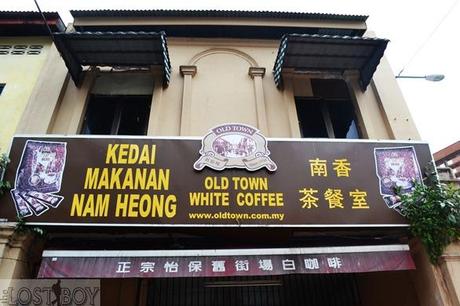
After a trip to Perak Tong, we were desperately in need of wi-fi and air-con, so we were fortunate to find Chinese-owned Yohan Bakery Cafe. It’s not as old and established as the others, but the steamed pandan cake and the orange cake were delicious and affordable.
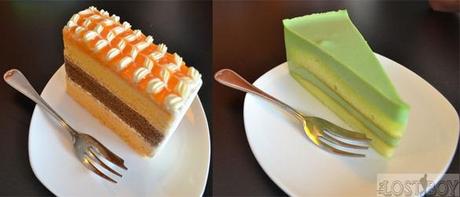
A trip to Ipoh isn’t complete without a taste of its traditional treats, but unfortunately, Funny Mountain, a famous store that sells tau foo fah or soybean pudding, was closed so early in the afternoon. Fortunately however, Sin Eng Heong was also on Jalan Theatre.
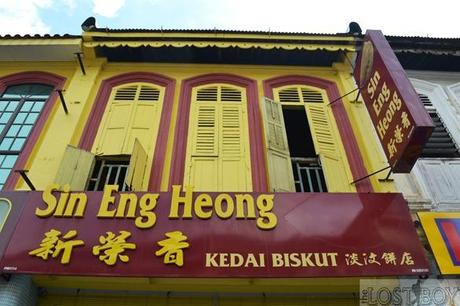
Sin Eng Heong is a kedai biskut or biscuit store, but it’s more like a Chinese confectionery with all the stuff they sell inside. Their most famous item is kaya kok or kaya puff. Honestly, I couldn’t find the words to describe how good those were, especially when they were given to us warm. And I must say the story of the flaky pastries is interesting as well.

Uncle Ng and his wife have been molding and handcrafting each kaya puff for more than 50 years. Even more fascinating is that they don’t employ modern machinery to make them, yet he, his wife, and a helper manage to make 3000-4000 kaya puffs by hand on a good day! Locals love their kaya puff so much that they do run out, and crowds could get crazy.
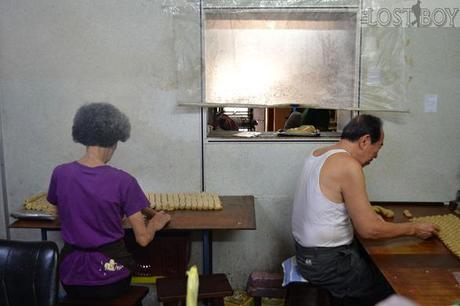
It was still the afternoon, yet to our surprise, Chinese stores were already closed. It was somewhat disheartening, but it was a valuable lesson about traveling to Ipoh. We just proceeded with our heritage trail until it rained a little.
By nightfall, our tummies were ready for some more Ipoh cuisine. Luckily, Restoran Lou Wong Tauge Ayam Kuetiau was one of the few Chinese places open, and it happened to be one of the most renowned places to eat nga choy kai or beansprouts chicken.
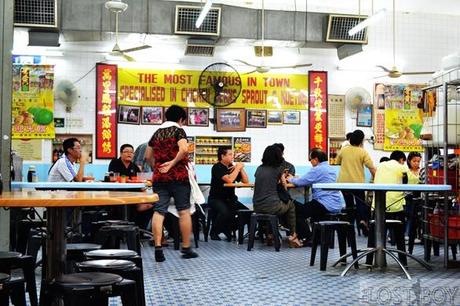
Before I proceed, I just want to share that it was so difficult to order! Their servers, even the one who was supposed to handle foreigners, barely spoke any English, so it really was a trying moment. Our “conversation” was filled with hand gestures, “can,” “yes,” and “no.” They weren’t even able to understand what I was saying in Malay.
Thankfully, the glorious food came. In front of us were a big plate of steamed chicken sitting on light soy sauce and oil, lots of crunchy seasoned beansprouts or tauge, and bowls of Ipoh sar hor fun, which sets it apart from the usual chicken rice of Malaysia and Singapore.
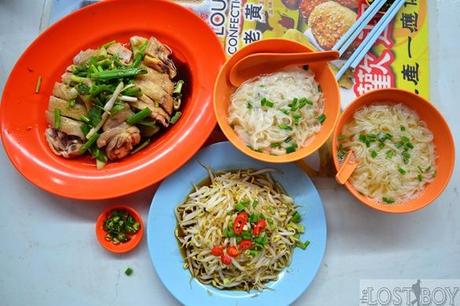
The chicken was really similar to Hainanese steamed chicken, as its texture was also smooth and slippery. The beansprouts were unusually fat than what we eat back home, and the crunch was a good contrast to the chicken. Lastly, the sar hor fun’s broth was lightly seasoned and somewhat on the sweet side. Did I mention we had real lemon iced tea too?
We were so full after our meal, but we still had some more time to kill. Seemingly the only coffee shop open that night was Yohan Bakery Café, so that’s where we had more cake.
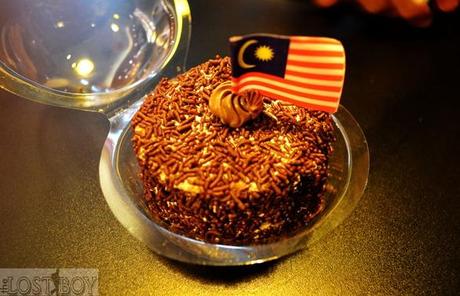
By 9:00 PM, we took a cab back to Medan Gopeng Bus Terminal to await our 10:00 PM bus to Alor Setar. At the station, stores were selling buttered corn on cups. That counts too, right?


